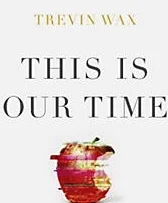The Neglected C. S. Lewis - A Review
One of the greatest frustrations for fans of C. S. Lewis is the number of fake quotes attributed to him. Some of them seems as obvious as the old joke, “Never trust information from the internet – Abraham Lincoln.” Some of the misquotes are, however, less obvious fabrications that distort people’s understanding of C. S. Lewis and undermine his legacy by trivializing it.
There are several contributing factors to the regular misquotation of C. S. Lewis. First, Lewis was a fabulous writer with a gift for turning a phrase, so he is imminently quotable. This is nowhere more apparent than in the exceedingly useful volume edited by Wayne Martindale and Jerry Root, The Quotable Lewis, which serves as a topical index of much of Lewis’s thought as well as fodder for social media posts.
A more significant contributor to the misquotation of Lewis is that too few people have read enough C. S. Lewis to recognize the difference between the true and counterfeit quotes. Many Christians know the name but have read nothing, so they like and share fake quotes out of ignorance. Many others have read some of the A-side works of C. S. Lewis: The Chronicles of Narnia, Screwtape Letters, Mere Christianity, or another of his more popular works. Nearly everything Lewis wrote has some value, so readers ought not to be discouraged. But there is an entire B-side of C. S. Lewis’s writings that are much more rarely discussed, even in academic research on Lewis and the Inklings.
Professionally, Lewis was a university level teacher of English literature. While his apologetic work was prolific and lucrative (he gave most of the money away), he also made significant contributions in his academic discipline. The books he wrote on literature and theory are often unknown even to fans of C. S. Lewis. And yet, his English Literature in the Sixteenth Century Excluding Drama was a landmark work comprehensively researched. His Discarded Image and Allegory of Love continue to be texts used in classes on medieval literature in both secular and religious academic settings.
Mark Neal and Jerry Root have set out to provide an introduction to some of the B-side works of C. S. Lewis in their recent book, The Neglected C. S. Lewis. In this relatively short volume, the authors explore some of the less popular works of Lewis that are no less valuable in understanding the mind of C. S. Lewis and, in fact, help illuminate what he does in some of his more popular works.
This is not a comprehensive volume. There are number of neglected works of Lewis that Neal and Root do not explore, likely because of space constraints. However, the volumes they do highlight are helpful. In the eight chapters of this text we get an overview of (1) The Allegory of Love, (2) The Personal Heresy, (3) Arthurian Torso, (4) English Literature in the Sixteenth Century excluding Drama, (5) Studies in Words, (6) An Experiment in Criticism, (7) The Discarded Image, and (8) Selected Literary Essays.
Some of these volumes are difficult to find (especially Arthurian Torso and English Literature), while others have been reprinted by reputable presses to ensure continued availability. The common links among them are they tend to be connected to Lewis’s proper field of study rather than his more popular apologetic work.
It might seem to some readers of Lewis enough to read Chronicles, Mere Christianity, and Screwtape, enjoy the readability and devotional quality, and move on. However, to understand the framework that Lewis is working from (which he partially unpacks in essays like “De Descriptione Temporum,” which is his inaugural address for his Chair at Cambridge), scholars and students need to read beyond the A-side of Lewis’s works into his more neglected works.
Neal and Root have done a great service to the field of Lewis studies by providing an accessible introduction to some of Lewis’s lesser-read works. This is the sort of auxiliary text that could accompany a college course on C. S. Lewis that is housed in the English Department of a university. For those engaged in the academic study of C. S. Lewis, this is an exceedingly helpful way to get an overview of and prioritize the study of volumes that are important, but off the beaten path.
The target audience of The Neglected C. S. Lewis is not the high school aficionado or the casually interested. However, this survey of some of the neglected works of Lewis is an essential part of a Lewis scholar’s library and a key resource for those looking for new areas of study in the increasingly crowded field of Inklings studies.
NOTE: I received a gratis copy of this volume with no expectation of a positive review.



























There’s no reason to doubt that Jesus was nailed to the cross. Ultimately, I trust what Scripture says about Jesus’s crucifixion because I also trust what it says about his resurrection. And that’s what we should be celebrating this week.